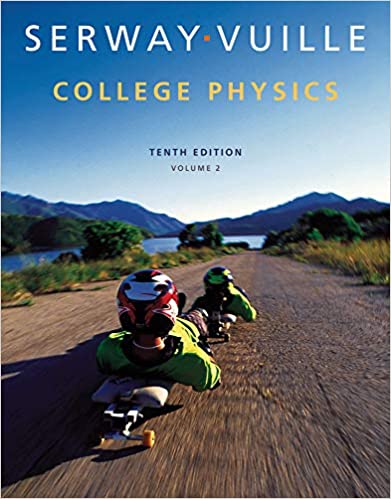
College Physics 10th Edition by Raymond Serway,Chris Vuille
Edition 10ISBN: 978-1285737041
College Physics 10th Edition by Raymond Serway,Chris Vuille
Edition 10ISBN: 978-1285737041 Exercise 94
Oxygenated hemoglobin absorbs weakly in the red (hence its red color) and strongly in the near infrared, whereas deoxygenated hemoglobin has the opposite absorption. This fact is used in a "pulse oximeter" to measure oxygen saturation in arterial blood. The device clips onto the end of a person's finger and has two light-emitting diodes-a red (660 nm) and an infrared (940 nm)-and a photocell that detects the amount of light transmitted through the finger at each wavelength. (a) Determine the frequency of each of these light sources. (b) If 67% of the energy of the red source is absorbed in the blood, by what factor does the amplitude of the electromagnetic wave change Hint: The intensity of the wave is equal to the average power per unit area as given by Equation 21.28.
Explanation
(a)
The frequency of electromagnetic wav...
College Physics 10th Edition by Raymond Serway,Chris Vuille
Why don’t you like this exercise?
Other Minimum 8 character and maximum 255 character
Character 255


